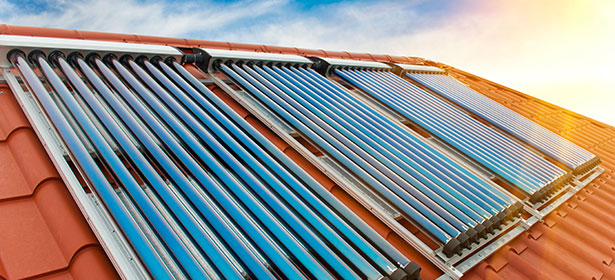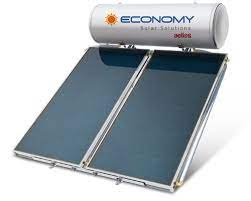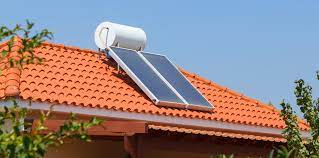Solar Thermal

A Solar Water Heating (SWH) system captures the warmth of the sun, transfers that heat to water and works with your conventional water heater to help it use less energy.
Unlike solar power systems (photovoltaic or “PV”) that collect light energy (photons) from the sun and convert it into electricity, solar water heating systems absorb the heat energy of the sun and use it to heat water. Since it involves heat energy the technology is referred to as solar thermal.
SWH systems are designed to deliver hot water for most of the year. However, in winter there sometimes may not be sufficient solar heat gain to deliver sufficient hot water. In this case, a gas or electric booster is normally used to heat the water.
Benefits
Solar water heating can have a number of benefits, including:
*Energy conservation: reducing the amount of energy used to heat your water, therefore;
Lowering the cost of heating your water by taking your bill down to lower tiers of energy use;
*Efficiency: new thermal technology has made Solar hot water one of the most efficient renewables;
*Savings: cut your bills, sunlight is free, so once you’ve paid for the initial installation your hot water costs will be reduced or eliminated;
*Cost: one of the least expensive & most established of all the renewable energy technologies;
*Installation: easy to install with minimum disruption to existing property;
*Integration: designed to work alongside almost all of the current heating systems. No need to remove your existing boiler;
*Availability: hot water throughout the year, the system works all year round, though you’ll need to heat the water further with a boiler or immersion heater during the winter months;
*Low Maintenance: maintenance costs for SWH systems are generally very low. Most solar water heating systems come with a five-year or ten-year warranty & require little to no maintenance;
*Impact: cut your carbon footprint: solar hot water is a green, renewable heating system and can reduce your carbon dioxide emissions, reducing harmful greenhouse gas emissions.
Heating of swimming pools and & or jacuzzis
Pool or Jacuzzi covering systems floating atop the water and separate solar thermal collectors may be used for pool & Jacuzzi heating. Pool covering systems, whether solid sheets or floating disks, act as solar collectors and provide pool heating benefits which, depending on climate, may either supplement the solar thermal collectors discussed below or make them unnecessary.
Solar thermal collectors for non-potable pool water use are often made of plastic. Pool water, mildly corrosive due to chlorine, is circulated through the panels using the existing pool filter or supplemental pump. In mild environments, unglazed plastic collectors are more efficient as a direct system. In cold or windy environments evacuated tubes or flat plates in an indirect configuration do not have pool water pumped through them, they are used in conjunction with a heat exchanger that transfers the heat to pool water causing less corrosion.
A fairly simple differential temperature controller is used to direct the water to the panels or heat exchanger either by turning a valve or operating the pump. Once the pool water has reached the required temperature, a diverter valve is used to return pool water directly to the pool without heating. Many systems are configured as drain-back systems where water drains into the pool when the water pump is switched off.
The collector panels are usually mounted on a nearby roof, or ground-mounted on a tilted rack. Due to the low-temperature difference between the air and the water, the panels are often formed, collectors or unglazed flat plate collectors. A simple rule-of-thumb for the required panel area needed is 50% of the pool’s surface area. This is for areas where pools are used in the summer season only, not year-round. Adding solar collectors to a conventional outdoor pool, in a cold climate, can typically extend the pool’s comfortable usage by some months or more if an insulating pool cover is also used. An active solar energy system analysis program may be used to optimize the solar pool heating system before it is built.


